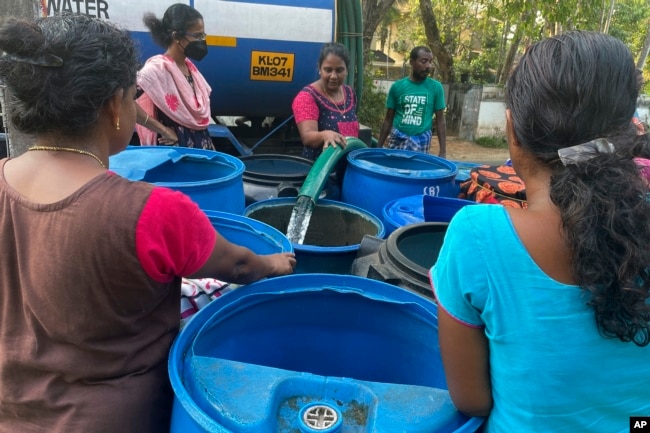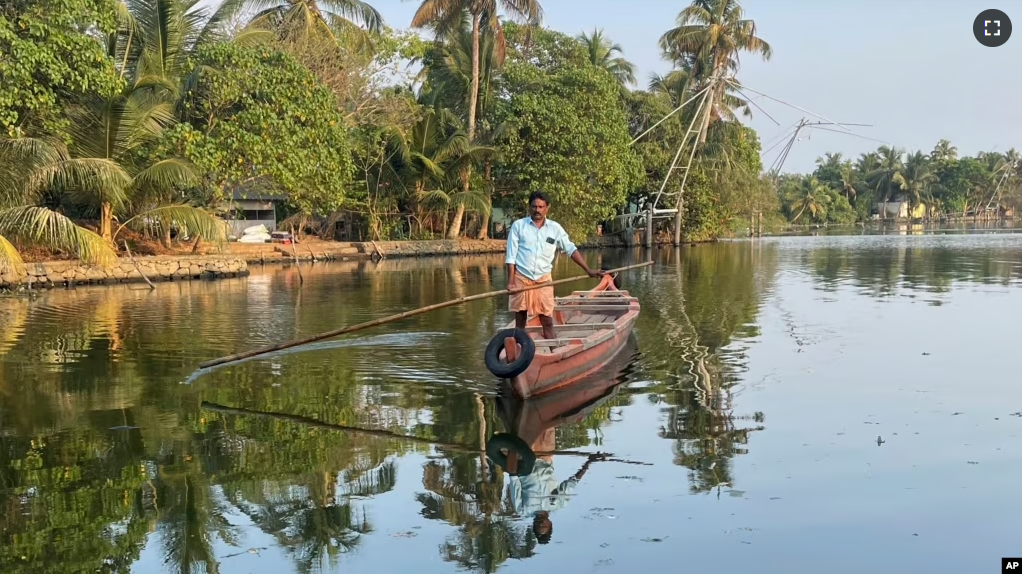Changing sea levels are affecting freshwater in places like Chellanam, India.
In Chellanam, saltwater is moving inland into small bodies of fresh water, like ponds and wells, which the village’s 600 families use for drinking, bathing and daily jobs. Chellanam is near the city of Kochi on the Arabian Sea on India’s southwestern coast.
The water around Chellanam became too salty to drink 60 years ago. It is now unusable even for cleaning clothes. Anthony Kuttappassera’s family has lived in the same house near the coast for over 100 years. He grew up drinking water from a pond and a well outside of his home. Now the pond is almost dry, just like all of the other ones in Chellanam.
Mustapas’re is now 73 years. He said when the pond was usable, there was no problem. They had everything they needed, but now they, “are using packed water for everything…We are surrounded by water, but we do not have any consumable water.”
There are water pipes that bring fresh water, but they leak or break a lot. That means trucks must carry water to the village. Each truck load of water must be poured into containers and then carried by hand into the village. The most recent water outage lasted about a month.
Saltwater invasion of groundwater is a problem around the world. Wealthy countries can deal with the problem more easily, but developing nations, like India, have problems.

Scientists say that ocean levels around the world are rising. They say changing ocean patterns, extreme storms, and too much water use, add to the salinity problem in the Kochi area. This combines with limited freshwater in Indian to create a bigger problem. The United Nations children’s agency, UNICEF, said less than half of India’s population has clean drinking water.
S. Sreekesh is a professor at Jawaharlal Nehru University. He studied sea level rise in the Kochi area using measurements of tides, satellite data and other information. He said the sea level is rising at a rate of 1.8 millimeters a year.
Bijoy Nandan is the dean of marine sciences at Cochin University of Science and Technology. He said that salinity has increased by over 30 percent since the first water studies of the area in 1971.
“People are suffering because the aquifers are getting salinized,” he said.
Maryamma Pillai is 82 years old. Sometimes she needs to buy water. It costs her almost $0.50 for five liters. She has no water at home, and it is hard for her to carry back from the government trucks.
Pillai said that every year gets worse as the summers become hotter.
“This was not the case earlier when we used to know how to plan for (each) season with more water availability but now everything is unknown, unpredictable and unreliable,” she said.
Other people travel by boat to other neighborhoods to get water because they live too far from the main road. Karni Kumar used a wooden boat to go to Alappuzha, a neighboring city, to get fresh water. But many other Chellanam villagers also go there causing high demand for water supplies, long waits and even conflicts with people in Alappuzha.
The Reverend John Kalathil is a leader of the St. George Church in South Chellanam. He said that residents have to pay $1.21 to $2.42, per day for their water. This is around 15 percent of their daily income.
Most income-earners at his church are fisherman. They love the sea and have a deep connection with it.
“They call it ‘Kadalamma,’ which means they look at (the) sea as their mother,” Reverend Kalathil said, “But the situation is very terrible for them because of climate change, weather, change in sea and water sources.”
I’m Faith Pirlo.
Uzmi Athar wrote this story for the press Trust of India and The Associated Press. Faith Pirlo adapted this story for Learning English.
_____________________________________________________________________
Words in This Story
pond –n. a small body of water
well – n. a source of ground water for drinking
consumable– adj. able to be eaten or drank
outage – n. a period of failure or interruption of use
pattern – n. a happening that takes place regularly in a predictable way
salinity – n. the salt content of water
tide – v. the natural rising and falling of the surface of the ocean and of large water bodies
aquifers – n. a water-bearing layer of rock, sand, or gravel underneath the ground
unreliable – adj. not dependable
